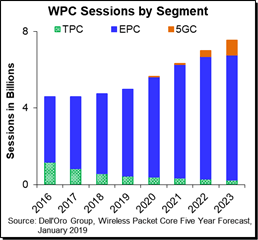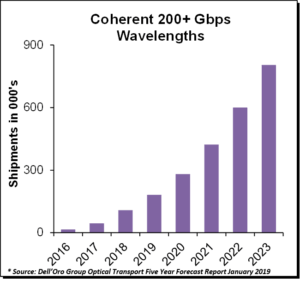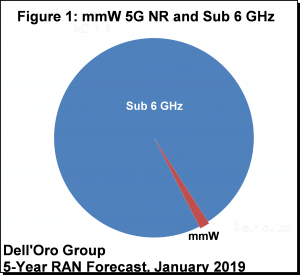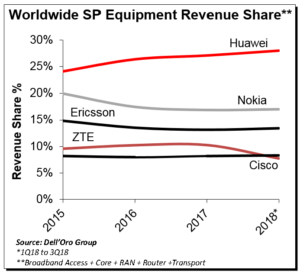Typically, in the early part of the year, I survey the broadband landscape and identify what I believe will be the year’s top trends and technology choices that will result in new product introductions and new service rollouts around the world.
In this 2019 broadband access market outlook series, I first discuss the high-level business and technology trends that will have an impact on network operators. Next, I describe the anticipated trends in broadband access and home networking. Finally, I review how two specific trends—edge computing and virtualization–address the larger business challenges, such as managing an expanded network of intelligent nodes. Here are the posts in my series:
- Part 1: Marco Trends
- Part 2: Cable Operators Use Distributed Access as Their Platform for Edge Computing and Virtualization
- Part 3: Operators’ Implementation Early Use Cases for Artificial Intelligence and Network Automation
- Part 4: Operators Continue to Push Further into the Home
Part 1 of 4: Macro Trends
The margins provided by the services network operators will continue to be squeezed by increased competition, market saturation, and pressure from OTT and cloud companies, which can often distribute similar services and applications at a reduced price. As a result, network operators will continue to reduce the cost of delivering services by:
- Moving more layer 3 functionality from dedicated access platforms and routers to servers in the cloud.
- Automating the provisioning, management, and troubleshooting of all network services; and using artificial intelligence to anticipate faults and other network-related issues.
- Increasingly moving away from proprietary hardware platforms in their access, edge, and core networks toward COTS hardware and servers with media gateway functionality.
Along those lines, a growing number of operators will divest their network assets and focus solely on content creation and distribution, while maintaining close relationships with underlying network operators to give them a competitive advantage over other OTT providers. Companies such as Crown Castle, American Tower, and other infrastructure providers are potential candidates for purchasing and managing network assets.
Those operators that don’t split out their network assets will continue to focus on the distribution of network platforms, intelligence, and workload processing. They will move away from centralized headends, data centers, and central offices to edge facilities, including hub sites, remote nodes, and modular edge data centers. Minimizing latency will become just as important to users as total broadband throughput. Operators that can deliver on both will secure the most subscribers and the highest revenue.
One ongoing challenge facing operators as they distribute more active electronics into their access networks is the scarcity of qualified labor to install, provision, and manage those platforms. Because of this labor shortage, operators will have to make smart and efficient decisions when it comes to deploying their technicians to install and provision these advanced platforms.
Though this is not an exhaustive list, I believe that these macro trends are under discussion among executives at many network operators. Operating a network is an extremely capital-intensive business. With the continued influx of software-based networking principles from the IT domain, data centers, and CDNs, service margins can certainly improve. Time will tell how quickly network operators embrace these principles throughout their access, edge, and core networks.
 “Initial 5G New Radio (5G NR) network launches are being implemented with 5G Non-standalone (5G NSA) architectures that utilize the 4G Evolved Packet Core (EPC); therefore we have pushed out by one year (from 2019 to 2020), our expectations of when we will see the first commercial deployments of 5G Core,” said Dave Bolan, analyst with the Dell’Oro Group.
“Initial 5G New Radio (5G NR) network launches are being implemented with 5G Non-standalone (5G NSA) architectures that utilize the 4G Evolved Packet Core (EPC); therefore we have pushed out by one year (from 2019 to 2020), our expectations of when we will see the first commercial deployments of 5G Core,” said Dave Bolan, analyst with the Dell’Oro Group. to approach $80 billion over the next five years. The majority of the Optical Transport revenue will be driven by demand for coherent 200+ Gbps wavelengths.
to approach $80 billion over the next five years. The majority of the Optical Transport revenue will be driven by demand for coherent 200+ Gbps wavelengths. The latest Mobile RAN 5-year forecast report claims the robust demand for 5G NR will propel the cumulative worldwide RAN market to nearly $160 B over the next five years.
The latest Mobile RAN 5-year forecast report claims the robust demand for 5G NR will propel the cumulative worldwide RAN market to nearly $160 B over the next five years. We just wrapped up the 3Q 2018 reporting period for all the Telecommunications Infrastructure programs.
We just wrapped up the 3Q 2018 reporting period for all the Telecommunications Infrastructure programs.